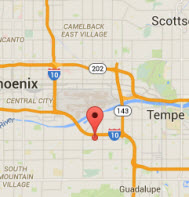Learn How To Screen Print With Catspit Productions, LLC
Manual Textile Press Settings: Using Off Contact
An important setting on your manual rotary textile screen printing press is the off contact, also known as snap or snap off. This is defined as the distance between the screen and the substrate before printing, when the screen is lowered into its printing position.
 This off contact distance prevents the screen from being in direct contact with the substrate before the printing action avoiding smearing or ghosting. It also allows the tightly stretched mesh to rise from the substrate immediately following the squeegee stroke. This snap off action also helps improve the shear factor between squeegee, ink, and the substrate creating an even more consistent ink deposit.
This off contact distance prevents the screen from being in direct contact with the substrate before the printing action avoiding smearing or ghosting. It also allows the tightly stretched mesh to rise from the substrate immediately following the squeegee stroke. This snap off action also helps improve the shear factor between squeegee, ink, and the substrate creating an even more consistent ink deposit.
Proper off contact settings are normally higher with manual textile presses but overall lower off contact settings will reduce distortion and improve registration. The ideal off contact distance is determined by screen dimensions, printed image, mesh tension, and ink characteristics. The desired print result may also be a factor.
Off contact distance is directly related to mesh tension and snap off motion. If any one of the three is altered, the others must be adjusted as well. Squeegee stroke speeds can also affect the drag between the squeegee and the screen depending on the off contact distance causing registration problems.
Other factors determining off contact distance are:
- The type and thickness of the substrate.
- Type of frame, metal or wood.
- The give or potential movement of the substrate such as fleece.
Wood frames in general have less tension then that of metal frames and require a greater off contact distance. Personal preference will also be something to consider when setting off contact. Different printers will suggest different distances based on their experiences. Distances can range from as little as a 1/16" to over 1/4".
Because off contact is the distance between the substrate and the screen, it must be set with the intended substrate to be printed in place on the pallet. This will ensure that when you engage in the actual print run the off contact will be correct for that product. There are many different methods and even tools to set off contact on manual textile presses.
Whatever method you use, you should keep in mind many presses are old and are unable to hold a screen parallel to the pallet arm due to give in the equipment. If you want to use a piece of a specific thickness Plexiglas or some wood board to set off contact and make the screen parallel to the pallet, add some distance to the end closest to the printer to compensate for armature sag. This added incline will depend on your press arm's ability to hold the screen in a fixed position consistently.
All of your pallets must be level before you can effectively set your off contact. Each print head has to have the off contact set individually. The end result of setting off contact properly is to have the screen be parallel to the pallet at a set distance when in the lowered position.
Having your manual textile screen printing press assembled and adjusted properly to manufactures specifications is a great place to start with any press. All of your press settings and functions will affect the quality and ability of your printing.


 Screenprinting Equipment From Catspit Productions
Screenprinting Equipment From Catspit Productions


